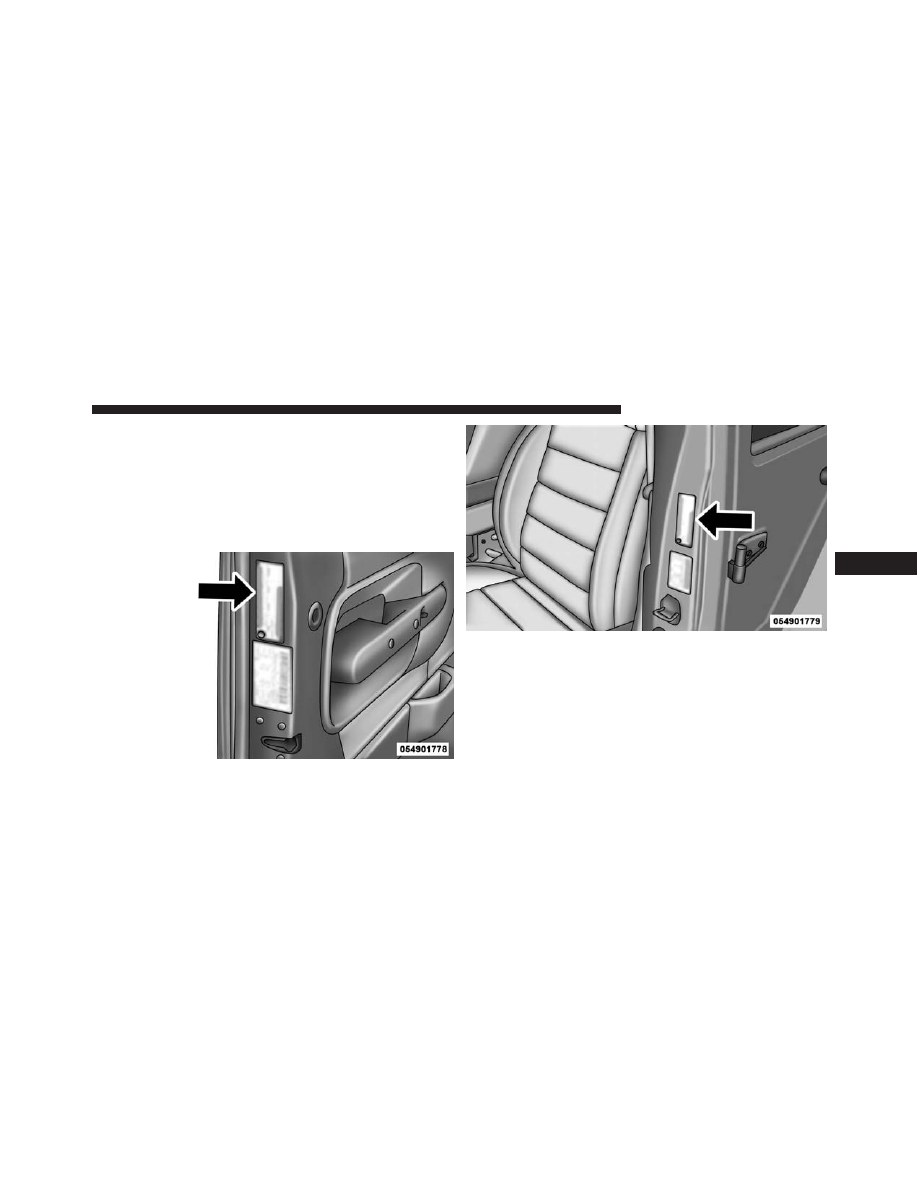Peugeot 4C (2015 year). Instruction - part 13

Tire Loading And Tire Pressure
Tire And Loading Information Placard Location
NOTE:
The proper cold tire inflation pressure is listed on
the driver’s side B-Pillar or the rear edge of the driver’s
side door.
Example Tire Placard Location (Door)
Example Tire Placard Location (B-Pillar)
5
STARTING AND OPERATING
191